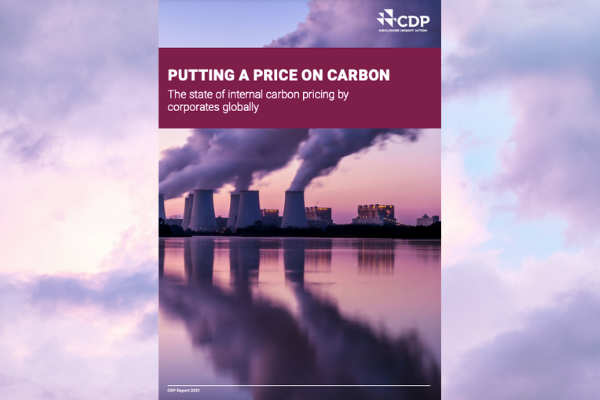
Submitted by firuze.alpaydin on May 22, 2021
In a new report, CDP analyses the climate change disclosures from nearly 6,000 companies in 2020 to assess the state of internal carbon pricing by corporates alongside developments in carbon pricing regulation globally.
The research shows that corporate adoption of carbon pricing is rising, with the number of companies using or planning to use an internal carbon price increasing 80% over just five years. This includes nearly half of the world’s 500 biggest companies.
The data demonstrates a correlation between companies setting an internal carbon price and taking other actions to reduce emissions, with a higher percentage of the companies currently implementing an internal carbon price also setting comprehensive emissions reduction targets or using more renewable energy.
Many companies use internal carbon pricing to address current or future regulations that could increase the cost of emissions and have a financial impact on their business. This is in the context of an increase in regulation globally – in 2021, 64 carbon pricing initiatives are in place or scheduled by governments and regulators, up from 61 in 2019.
However, despite 1,830 companies saying that they currently face or expect regulation on the price of carbon, 60% of these did not identify it as a substantive risk to their business.
CDP’s latest data from 2020 shows an 80% increase in the number of companies planning or using an internal carbon price in just five years
With more than 2,000 companies now disclosing current or planned used of internal carbon pricing to CDP. The combined market capitalization of these companies now exceeds US$27 trillion, a significant increase from $7 trillion at the time of CDP’s most recent report in 2017.
Nearly half (226) of the world’s 500 biggest companies by market capitalization
are now putting a price on carbon or planning to do so within the next two years, more than doubling the number from our last report in 2017.
11 of the 13 industries included in the analysis reported an increase in the share of companies using or planning internal carbon pricing between 2019 and 2020
-The highest growth in this respect was in financial services, which increased 6.2% year on year -The power and fossil fuel industries have consistently had the highest proportion of companies currently using or planning to use an internal carbon price since 2018. Likewise, power and fossil fuel companies are also the most regulated industries based on CDP data.
Almost all regions reported an increase in the number of companies setting a carbon price or planning to price carbon since 2018
Asia saw the largest absolute increase in the total number of companies using an internal carbon price or planning to use a price. European domiciled companies ranked second, and North America ranked third. Despite the lowest number of companies coming from Africa, this region has the highest proportion using or planning to use, primarily driven by the tax in South Africa.
Internal carbon pricing goes hand in hand with emissions reduction activities
CDP data indicates a correlation between the companies putting a price on carbon and those taking other strategic actions to integrate climate change issues into their business strategy as a means to reduce risk, such as by setting a science-based target (SBT) or sourcing more energy from renewables.
Shadow pricing is the most common type of internal carbon price
5 in 10 companies disclosed the use of a shadow price in 2020 and has consistently been the most common type of price utilized since CDP started requesting information on internal carbon pricing. In 2020, 90% of companies with an internal carbon price disclosed that it covered their direct (scope 1) emissions.
Please click here to reach the report.





